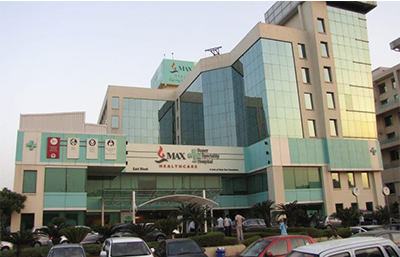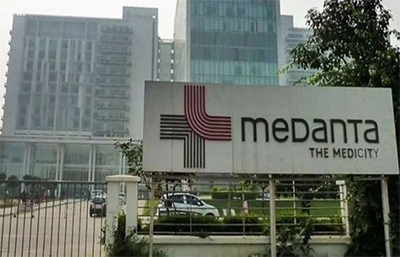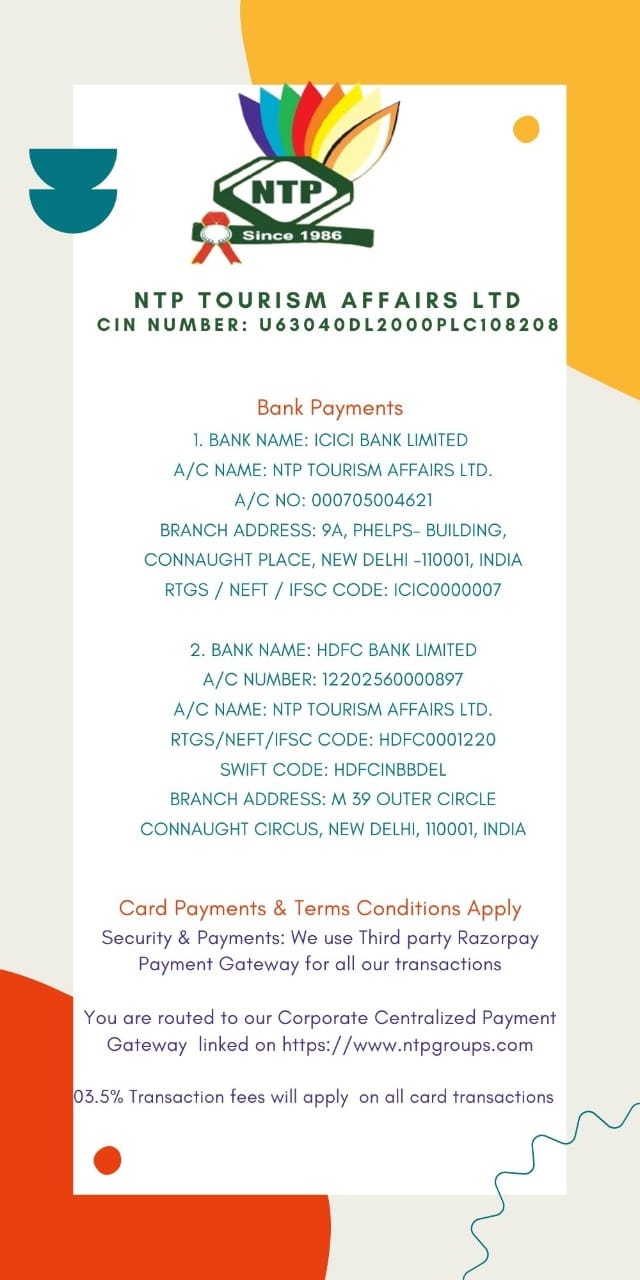****************************************************************************************************************
India Healthcare Industry Report July 2020
Introduction
Healthcare has become one of India’s largest sector, both in terms of revenue and employment. Healthcare comprises hospitals, medical devices, clinical trials, outsourcing, telemedicine, medical tourism, health insurance and medical equipment. The Indian healthcare sector is growing at a brisk pace due to its strengthening coverage, services and increasing expenditure by public as well private players
Indian healthcare delivery system is categorised into two major components - public and private. The Government, i.e. public healthcare system, comprises limited secondary and tertiary care institutions in key cities and focuses on providing basic healthcare facilities in the form of primary healthcare centres (PHCs) in rural areas. The private sector provides majority of secondary, tertiary, and quaternary care institutions with major concentration in metros and tier I and tier II cities
India's competitive advantage lies in its large pool of well-trained medical professionals. India is also cost competitive compared to its peers in Asia and Western countries. The cost of surgery in India is about one-tenth of that in the US or Western Europe. India ranks 145 among 195 countries in terms of quality and accessibility of healthcare.
Market Size
The healthcare market can increase three-fold to Rs 8.6 trillion (US$ 133.44 billion) by 2022.
Indian medical tourism market is growing at 18 per cent y-o-y and is expected to reach US$ 9 billion by 2020. There is a significant scope for enhancing healthcare services considering that healthcare spending as a percentage of Gross Domestic Product (GDP) is rising. The Government’s expenditure on healthcare sector has grown to 1.6 per cent of the GDP in FY20BE from 1.3 per cent in FY16.
Health insurance is gaining momentum in India. Gross direct premium income underwritten by health insurance grew 17.16 per cent y-o-y to Rs 51,637.84 crore (US$ 7.39 billion) in FY20.
Investment
Hospitals and diagnostic centers attracted Foreign Direct Investment (FDI) worth US$ 6.72 billion between April 2000 and March 2020, according to the data released by Department for Promotion of Industry and Internal Trade (DPIIT). Some of the recent investments in the Indian healthcare industry are as follows:
Government Initiatives
Some of the major initiatives taken by the Government of India to promote Indian healthcare industry are as follows:
- In Union Budget 2020-21, Rs 35,600 crore (US$ 5.09 billion) has been allocated for nutrition-related programmes.
- The Government has announced Rs 69,000 crore (US$ 9.87 billion) outlay for the health sector that is inclusive of Rs 6,400 crore (US$ 915.72 million) for PMJAY in Union Budget 2020-21.
- The Government of India aims to increase healthcare spending to three percent of the Gross Domestic Product (GDP) by 2022.
- In February 2019, the Government of India established a new All India Institute of Medical Sciences (AIIMS) at Manethi, District Rewari, Haryana at a cost of Rs 1,299 crore (US$ 180.04 million).
- The Union Cabinet approved setting up of National Nutrition Mission (NNM) with a three-year budget of Rs 9,046 crore (US$ 1.29 billion) to monitor, supervise, fix targets and guide the nutrition related interventions across ministries.
- On September 23, 2018, Government of India launched Pradhan Mantri Jan Arogya Yojana (PMJAY), to provide health insurance worth Rs 500,000 (US$ 7,124.54) to over 100 million families every year.
- In August 2018, the Government of India approved Ayushman Bharat-National Health Protection Mission as a centrally sponsored scheme contributed by both center and state Government at a ratio of 60:40 for all States, 90:10 for hilly Northeastern States and 60:40 for Union Territories with legislature. The center will contribute 100 per cent for Union Territories without legislature
- The Government of India launched Mission Indradhanush with an aim of improving coverage of immunisation in the country. It aimed to achieve atleast 90 per cent immunisation coverage by December 2018 and cover unvaccinated and partially vaccinated children in rural and urban areas of India.
Achievements
Following are the achievements of the Government:
- As of July 2019, around 125.7 million families enrolled as beneficiaries under Pradhan Mantri Jan Arogya Yojana (PMJAY). The scheme enrolled 16,085 hospitals, including 8,059 private hospitals and 7,980 public hospitals. It included 19 AYUSH packages in the treatment scheme.
- As of September 2019, about 50 lakh people received free treatment under the Ayushman Bharat - Pradhan Mantri Jan Arogya Yojana.
- The number medical colleges in India increased to 529 in FY19 from 381 in FY13.
- According to Sample Registration System Bulletin-2016, India has registered a 26.9 per cent reduction in Maternal Mortality Ratio (MMR) since 2013
Road Ahead
India is a land full of opportunities for players in the medical devices industry. The country has also become one of the leading destinations for high-end diagnostic services with tremendous capital investment for advanced diagnostic facilities, thus catering to a greater proportion of population. Besides, Indian medical service consumers have become more conscious towards their healthcare upkeep.
Indian healthcare sector is much diversified and is full of opportunities in every segment, which includes providers, payers, and medical technology. With the increase in the competition, businesses are looking to explore for the latest dynamics and trends which will have positive impact on their business. The hospital industry in India is forecast to increase to Rs 8.6 trillion (US$ 132.84 billion) by FY22 from Rs 4 trillion (US$ 61.79 billion) in FY17 at a CAGR of 16-17 per cent.
The Government of India is planning to increase public health spending to 2.5 per cent of the country's GDP by 2025.
India's competitive advantage also lies in the increased success rate of Indian companies in getting Abbreviated New Drug Application (ANDA) approvals. India also offers vast opportunities in R&D as well as medical tourism. To sum up, there are vast opportunities for investment in healthcare infrastructure in both urban and rural India.
Note: Conversion rate used in April 2020, Rs 1 = US$ 0.013123
References: Department for Promotion of Industry and Internal Trade (DPIIT), RNCOS Reports, Media Reports, Press Information Bureau (PIB)
***************************************************************************************************
Medical Visas For India
Foreign nationals who wish to avail of medical treatment in India should obtain a Medical Visa (“MV”). Such a visa is granted to those seeking medical treatment in reputed or recognized specialized hospitals or treatment centers in India. According to information available on the official website of the government of India, MVs can be granted for different types of treatment including for neurosurgery, ophthalmic disorders, heart-related problems, renal disorders, organ transplantation, congenital disorders, gene-therapy, radio-therapy, plastic surgery or joint replacement surgery. Indian consular posts also consider MV applications for treatments under India’s traditional medical practices like Ayurveda.
Each application for a MV must clearly establish that the applicant has been advised specific medical treatment by a practitioner in his or her country of nationality or residence. It is advisable to add information regarding the potential treatment in India, a description of the credentials of the institute where the medical treatment will be administered along with a letter from this institute describing the treatment. If possible, the applicant should also add a letter from the medical practitioner in India who will administer the medical treatment confirming that the applicant is scheduled for the relevant treatment.
A MV is granted for a period of one year or for the duration of the treatment whichever is less. It is possible to obtain an extension if the treatment takes longer that a year or the anticipated duration. Additional extensions may be granted by the Ministry of Home Affairs in certain circumstances.
Up to two attendants who are close relatives of the patient are allowed to accompany the patient. Each of the accompanying individuals must obtain a separate Medical Attendant visa (“MXV”), which will be issued with the same validity as the MV. Both MV and MXV visas grant multiple entries of up to three visits. The processing times vary at different consular post. However, U..S born American citizens are usually granted a visa within two to three working days.
Registration in India
All foreign nationals on an MV or an MXV need to register with the Foreigners Regional Registration Office (“FRRO”) or the Foreigners Registration Office (“FRO”) within 14 days of arrival in India. The office where a foreign national should register depends on the place of residence of the individual. There are seven FRROs in all – one each in Hyderabad, Mumbai, New Delhi, Chennai, Bangalore, Kolkata and Amritsar. The relevant FRO is the office of the District Superintendent of Police in the relevant jurisdiction. Pakistan Nationals are required to register within 24 hours and Afghanistan Nationals are required to register within 14 days of their arrival in India (days should be counted from the date of arrival). There is no fee to be paid at the time of registration but if there is a delay in registering a penalty of US$ 30 will be levied.
In addition to the standard documents required for registration, individuals on an MV need to provide as evidence of the proposed treatment, a copy of a medical certificate or prescription issued by a recognized, reputed or specialized hospital in India. Individuals on MXV need to establish their relationship with the patient and also provide evidence of the treatment as set out above.
Conversion of Visas
Foreign nationals on a business visa or an employment visa in India can apply to convert their visas to a MV if they fall ill, are unable to travel and require specialized medical treatment in India. A change of visa may be required if the individual falls out of status, for example if he is on an employment visa and the visa expires. Such individuals will be granted an MV provided they fulfill all the criteria to be eligible for an MV and can provide a medical certificate from a government or government-recognized hospital. In such cases qualifying members of the principle applicant could apply for an MX, which is usually granted to co-terminate with the principle applicant’s MV. The MV and MXV will bear an endorsement stating that employment or business is not permitted.
The Medical Visa is a result of the Government’s recognition of the importance of medical tourism in India. It enables individuals to enter the country to procure medical treatment on valid visas.
***************************************************************************************************
The Surrogacy (Regulation) Bill, 2019
- The Surrogacy (Regulation) Bill, 2019 was introduced by the Minister of Health and Family Welfare, Dr. Harsh Vardhan in Lok Sabha on July 15, 2019. The Bill defines surrogacy as a practice where a woman gives birth to a child for an intending couple with the intention to hand over the child after the birth to the intending couple.
- Regulation of surrogacy: The Bill prohibits commercial surrogacy, but allows altruistic surrogacy. Altruistic surrogacy involves no monetary compensation to the surrogate mother other than the medical expenses and insurance coverage during the pregnancy. Commercial surrogacy includes surrogacy or its related procedures undertaken for a monetary benefit or reward (in cash or kind) exceeding the basic medical expenses and insurance coverage.
- Purposes for which surrogacy is permitted: Surrogacy is permitted when it is:
- For intending couples who suffer from proven infertility;
- altruistic
- not for commercial purposes;
- not for producing children for sale, prostitution or other forms of exploitation;
- for any condition or disease specified through regulations.
- Eligibility criteria for intending couple: The intending couple should have a ‘certificate of essentiality’ and a ‘certificate of eligibility’ issued by the appropriate authority.
- A certificate of essentiality will be issued upon fulfilment of the following conditions:
- a certificate of proven infertility of one or both members of the intending couple from a District Medical Board;
- an order of parentage and custody of the surrogate child passed by a Magistrate’s court
- insurance coverage for a period of 16 months covering postpartum delivery complications for the surrogate.
- The certificate of eligibility to the intending couple is issued upon fulfilment of the following conditions:
- the couple being Indian citizens and married for at least five years;
- between 23 to 50 years old (wife) and 26 to 55 years old (husband)
- they do not have any surviving child (biological, adopted or surrogate); this would not include a child who is mentally or physically challenged or suffers from life threatening disorder or fatal illness
- Other conditions that may be specified by regulations.
- Eligibility criteria for surrogate mother: To obtain a certificate of eligibility from the appropriate authority, the surrogate mother has to be:
- a close relative of the intending couple
- a married woman having a child of her own;
- 25 to 35 years old;
- a surrogate only once in her lifetime;
- possess a certificate of medical and psychological fitness for surrogacy. Further, the surrogate mother cannot provide her own gametes for surrogacy.
- Appropriate authority: The central and state governments shall appoint one or more appropriate authorities within 90 days of the Bill becoming an Act. The functions of the appropriate authority include;
- granting, suspending or cancelling registration of surrogacy clinics
- enforcing standards for surrogacy clinics
- investigating and taking action against breach of the provisions of the Bill
- recommending modifications to the rules and regulations.
Registration of surrogacy clinics: Surrogacy clinics cannot undertake surrogacy related procedures unless they are registered by the appropriate authority. Clinics must apply for registration within a period of 60 days from the date of appointment of the appropriate authority.
Parentage and abortion of surrogate child: A child born out of a surrogacy procedure will be deemed to be the biological child of the intending couple. An abortion of the surrogate child requires the written consent of the surrogate mother and the authorisation of the appropriate authority. This authorisation must be compliant with the Medical Termination of Pregnancy Act, 1971. Further, the surrogate mother will have an option to withdraw from surrogacy before the embryo is implanted in her womb.
National and State Surrogacy Boards: The central and the state governments shall constitute the National Surrogacy Board (NSB) and the State Surrogacy Boards (SSB), respectively. Functions of the NSB include,
- Advising the central government on policy matters relating to surrogacy;
- laying down the code of conduct of surrogacy clinics
- Supervising the functioning of SSBs.
Offences and penalties: The offences under the Bill include:
- undertaking or advertising commercial surrogacy
- exploiting the surrogate mother
- abandoning, exploiting or disowning a surrogate child
- selling or importing human embryo or gametes for surrogacy. The penalty for such offences is imprisonment up to 10 years and a fine up to 10 lakh rupees.
The Bill specifies a range of offences and penalties for other contraventions of the provisions of the Bill.
Disclaimer: This information has been collected through secondary research and IBEF is not responsible for any errors in the same








